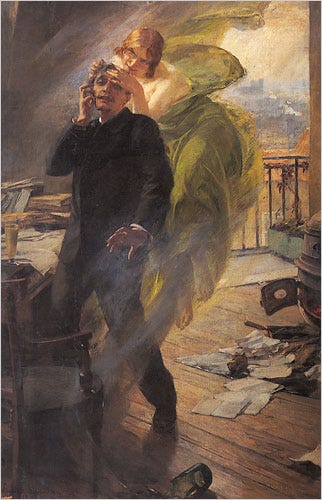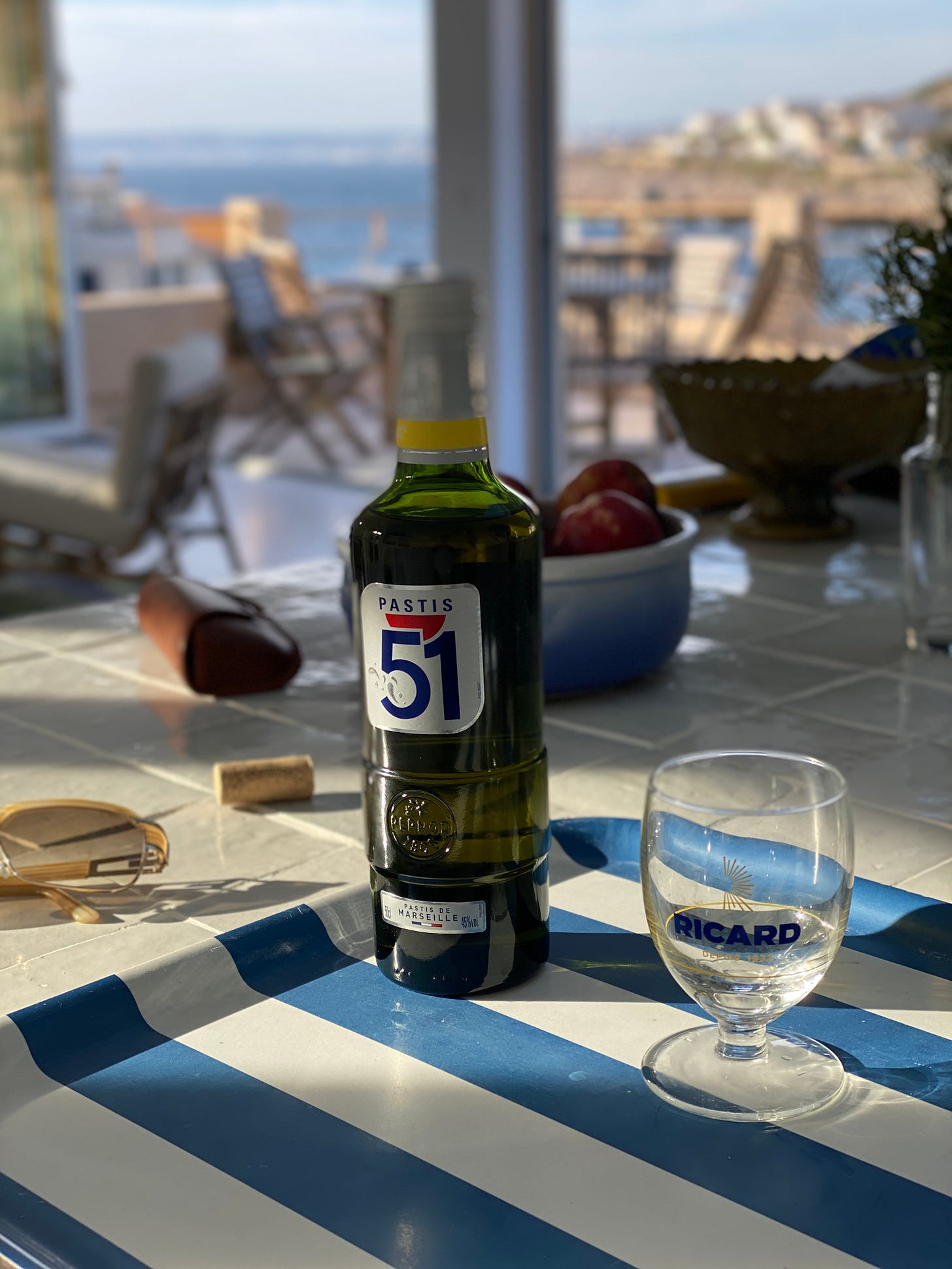Pétanque and Pastis
Drinking Provence in a bottle and playing for bragging rights to then savour "Gambas Flambées au Pastis"
I missed last weeks entry because I was on a beautiful vacation with my family. We went down to southern France to enjoy some sun, wine and all the beautiful tomatoes you can stuff your face with. My brother and I divulge the fact that pastis is the best summer drink before dinner or after lunch just because pastis, and the French sport of Boules or Pétanque is a religion in southern France. What other sport can you smoke, have a drink and play all at the same time? I love both the game of Boules and pastis and I find they go hand in hand, but how did that come to be?
Boules is predominantly played by elders in town squares or parks and keeps the community going or can cause arch-nemesis like relationships. One small pétanque park in Marseille where my family and I played had a memorial plaque written in French to a dearly departed “Coco” and those who regularly played were most likely Coco’s good friends. Banter and piercing eyes focus on the cochonnet which is the small ball you try to get close to in order to score points. It’s a fun and social game brought to France, more precisely the region of Provence, by the ancient Roman soldiers and sailors way back when.
During the 14th century, life was hard enough with the Great Famine or the bubonic plague, so to top it off both Charles IV and Charles V denied the sport to commoners. In the 17th century the ban was lifted, so around 300 years without being allowed to play made it that much more popular once it was accessible.

What brought the alcoholic beverage of pastis to be paired so well with the game of Boules is not easy to find the facts. Yet the fact that this is Provence in a bottle is evident when you are in the south of France. The sound of Provence are the cicadas and boules hitting each other with the taste and smell of pastis defines the south and also makes you want to take out an easel and start oil painting the scenery.

The history of pastis derived from the craze of Absinthe and the artistic bohemians of Paris who abused it. Absinthe was banned in 1915 in France because of a false belief that the ingredient of wormwood in Absinthe is toxic, which is true but only in a large quantity of distilled oil of wormwood. In fact wormwood is an anti-fungal, insecticidal, antimicrobial, antimalarial, an antidepressant, and hepatoprotective (prevents damage to the liver). Yet traditional pastis omitted the wormwood but imitated it’s flavour from the mediterranean herbs of green anise and fennel used in Absinthe.
Then comes along the son of a wine merchant from Marseille named Paul Ricard. He realised the craze for absinthe and aniseed flavoured drinks and was inspired to create a drink that would be legal to sell. He dubbed his creation after his own name and the and in 1932 the drink caught on and became available in most bars and drink menus across France.
There are different types of pastis, they share the similar tastes of licorice and anise. Ricard and Pernod were major competitors in the past until they became one house known as Pernod Ricard in 1975. Pernod was founded by a Swiss distiller named Henri-Louis Pernod in 1797, known for their absinthe. After Pernod’s death the distillery moved near Paris in 1871. In 1951 they launched Pastis 51. After joining forces they became a massive conglomerate that now owns: Chivas Regal, Glenlivet, Jameson, Ballantine’s, Absolut Vodka, Becherovka, Beefeater, Havana Club, Kahlúa, Malibu, Olmeca, Mumm Champagne and many more.
When pastis was artisanally produced from whole herbs like majority of the spirits produced at the beginning of their fame, the modern versions are prepared commercially with flavourings such as essences or extracts and colorings.
My brother bought me a bottle of Henri Bardouin pastis and a pair of socks for my birthday once I couldn’t shut up about it after trying it at the Tuba Club restaurant in Marseille. It is more herby with Szechuan pepper and perhaps smells and tastes like what pastis would have been when it was first created. No matter which pastis you choose, one thing is mandatory: cool water and ice cubes. If you have that, and a set of boules you are doing things right.
France isn’t the only country who appreciate this type of licorice flavour alcoholic drink. In Greece they cherish Ouzo, in Turkey it’s Raki, Lebanon or Syria Arak is enjoyed, or Italian Sambuca. All these hail from the Mediterranean Sea and the ingredients thereof. Truly a drink to be enjoyed under the heavy summer sun.
Gambas Flambées au Pastis
Go on an adventure to find 8 or 10 attractive gambas to share with another person, or for yourself I’m not judging. A bottle of pastis, whichever one you choose you can’t go wrong but the Henri Bardouin embraces an aroma like no other. Some olive oil and a bouquet of parsley, one fresh bulb of organic garlic and a lemon.
Lightly marinade the gambas on a plate with 5-6 tablespoons of pastis for 15 minutes. Prepare to clean and dry half of the parsley and chop it finely. Slice 2 cloves of garlic and cut the lemon in half.
Heat up your favourite skillet with 2 tablespoons of olive oil. Once hot, put the gambas in and reserve the marinade. Add the sliced garlic and lower the heat in order to safely put in the marinade of pastis, wait a few seconds before you attempt to flamber. Finally once the flames die out, add the parsley and give the pan a swirl before plating.
A savoury dish that pairs well with even more pastis.
Pastisly yours,
The Greasy Pen.







